I took this photograph of a sassafras leafscape on my my saunter down Piney Woods Church Road this morning.
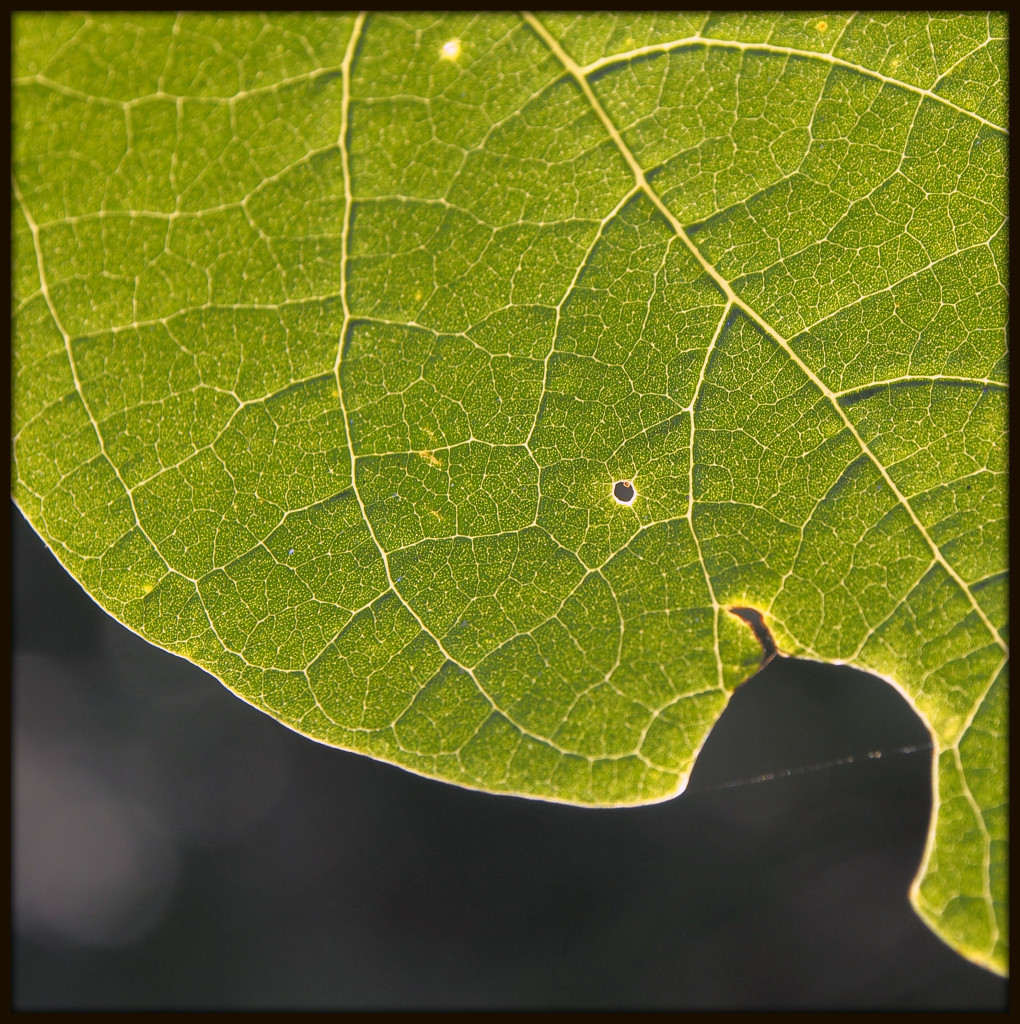
I took this photograph of a sassafras leafscape on my my saunter down Piney Woods Church Road this morning.

I felt compelled to photograph this unusual frond of ebony spleenwort (Asplenium platyneuron), which had developed a bend during its growth.
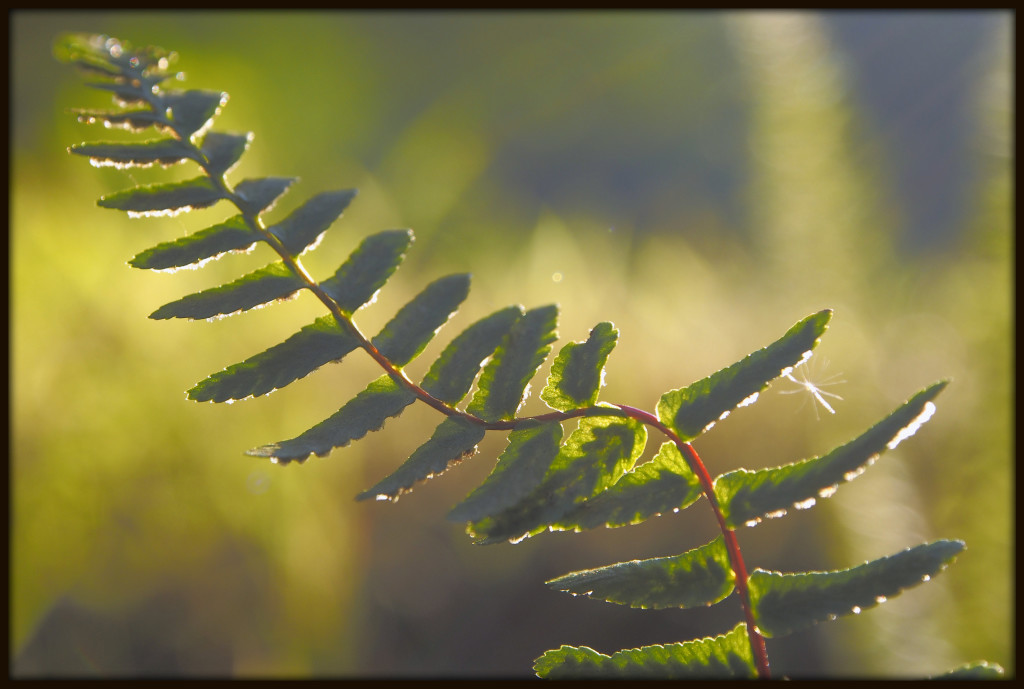
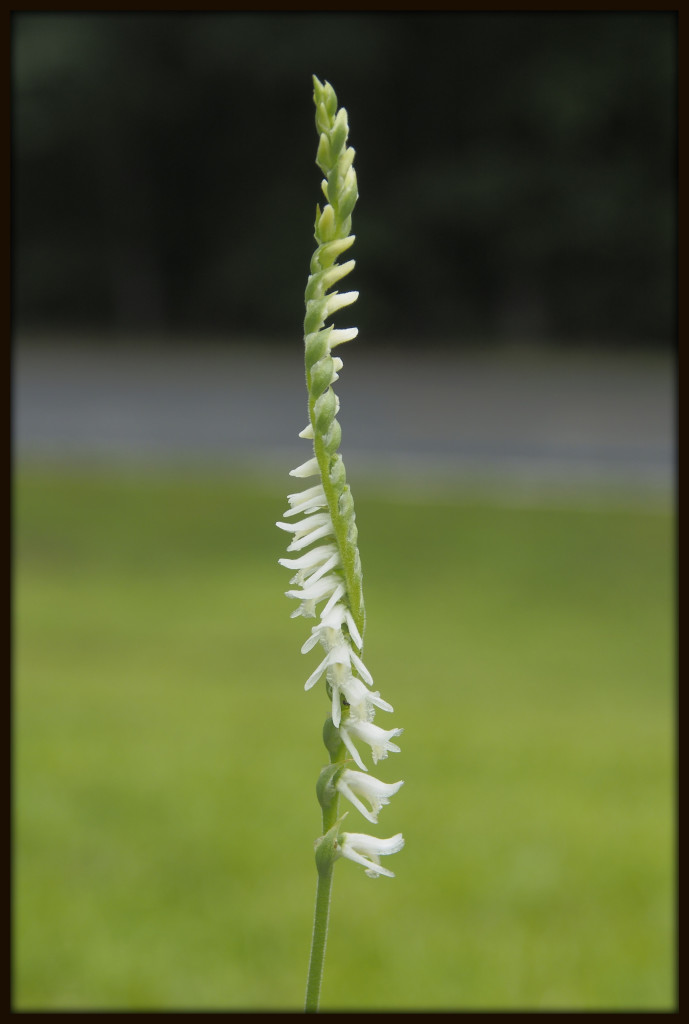 There is much to be said for leaving a lawn untouched. First there is the matter of money and labor associated with applying various fertilizers and weed-killers. Then there is the blatant fact that a well-tended lawn is boring. It is analogous to an outdoor carpet: single tone of color, a few species of grasses (perhaps only one), few insects (and therefore few insect predators as well). But if one leaves a lawn alone, wonderful things can begin to happen.
There is much to be said for leaving a lawn untouched. First there is the matter of money and labor associated with applying various fertilizers and weed-killers. Then there is the blatant fact that a well-tended lawn is boring. It is analogous to an outdoor carpet: single tone of color, a few species of grasses (perhaps only one), few insects (and therefore few insect predators as well). But if one leaves a lawn alone, wonderful things can begin to happen.
Yes, there is the inevitable crabgrass and Bermuda grass, seedlings of sweet gum and loblolly pine, and pokeweed resolutely striving to gain a foothold. Then there are the invasive plants — most noticeably in this Chattahoochee Hills yard, honeysuckle and privet. But there are also annual and perennial wildflowers of meadow and roadside that begin to make an appearance. Given time, dry ground, and plenty of sunlight, an orchid might even grow in the yard.
And that is how, after several years of a lawn-care regimen consisting of mowing perhaps four times every summer but otherwise leaving the grass alone, several ladies’ tresses appeared in this writer’s lawn. More specifically, they were little ladies’ tresses, also known as little pearl-twist (Spiranthes tuberosa). Found from Texas to Massachusetts and Kansas to Florida, little ladies’ tresses is one of 17 species of ladies’ tresses present in the Southeast. Even trained botanists sometimes have great difficulty telling the different species (not to mention their hybrids) apart; fortunately, the little ladies’ tresses is the only member of the genus that blooms at midsummer here in Georgia, and is also unique for not having its basal leaves present during flowering. Most other members of Spiranthes (even the misnamed spring ladies’ tresses, Spiranthes vernalis) bloom in late summer or early autumn, and retain their leaves all summer long.
Ladies’ tresses are lovely not so much for their flowers as for the elegant form of their presentation on the stalk. The individual flowers are pure white, very small (about 4 mm long) and otherwise unspectacular; however, they are arranged in a lovely spiral pattern. That is the origin of the genus name Spiranthes, which means “coil flower”. There is much variability from one plant to the next. Some have their blooms arrayed in multiple tight spirals, twisted to the point that they seem to be in three or four columns. Others have no spiral at all, forming a single column on one side of the stalk. The most striking, to this writer’s eye, are the ones that have two or three gentle spirals of flowers running up the stalk in waves.
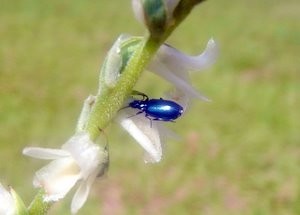 One particular little ladies’ tresses was being visited by a small beetle when the author photographed it on a morning in mid-June (see photograph on the right). The beetle was metallic black in color, and less about half a centimeter long, and perched on one of the flower blossoms. According to An Atlas of Orchid Pollination by Nelis Cingel, orchids in the genus Spiranthes are all pollinated by long-tongued bees, including some halictid bees (also called “sweat bees”) and bumblebees. What, then, was the beetle doing there? Beetles are exceedingly diverse and usually quite difficult to identify down to the species or even genus level. With that caveat, it was probably a ground beetle in the genus Cymindis. Unique among the ground beetles, species of Cymindis tend to be active during the daytime, and visible on flowers and foliage. They do not drink nectar, but instead feed on insects such as plant lice. It is possible that this particular beetle was hunting for a meal, or perhaps just resting at a particularly beautiful spot.
One particular little ladies’ tresses was being visited by a small beetle when the author photographed it on a morning in mid-June (see photograph on the right). The beetle was metallic black in color, and less about half a centimeter long, and perched on one of the flower blossoms. According to An Atlas of Orchid Pollination by Nelis Cingel, orchids in the genus Spiranthes are all pollinated by long-tongued bees, including some halictid bees (also called “sweat bees”) and bumblebees. What, then, was the beetle doing there? Beetles are exceedingly diverse and usually quite difficult to identify down to the species or even genus level. With that caveat, it was probably a ground beetle in the genus Cymindis. Unique among the ground beetles, species of Cymindis tend to be active during the daytime, and visible on flowers and foliage. They do not drink nectar, but instead feed on insects such as plant lice. It is possible that this particular beetle was hunting for a meal, or perhaps just resting at a particularly beautiful spot.
This article was originally published on June 29, 2010.
I continue to be intrigued by the many twists and turns of the tendrils of muscadine grapevine (Vitis rotundifolia). The more attention I pay to them, the more I begin to wonder at patterns I notice. For example, it seems as if all the bright red tendrils are located near the top of the vine, in places exposed to direct sunlight. The tendrils lower down on the plan tend toward much paler red or even green. I wonder if the red tendrils contain a photosynthetic pigment that the green ones do not. Something to research further….
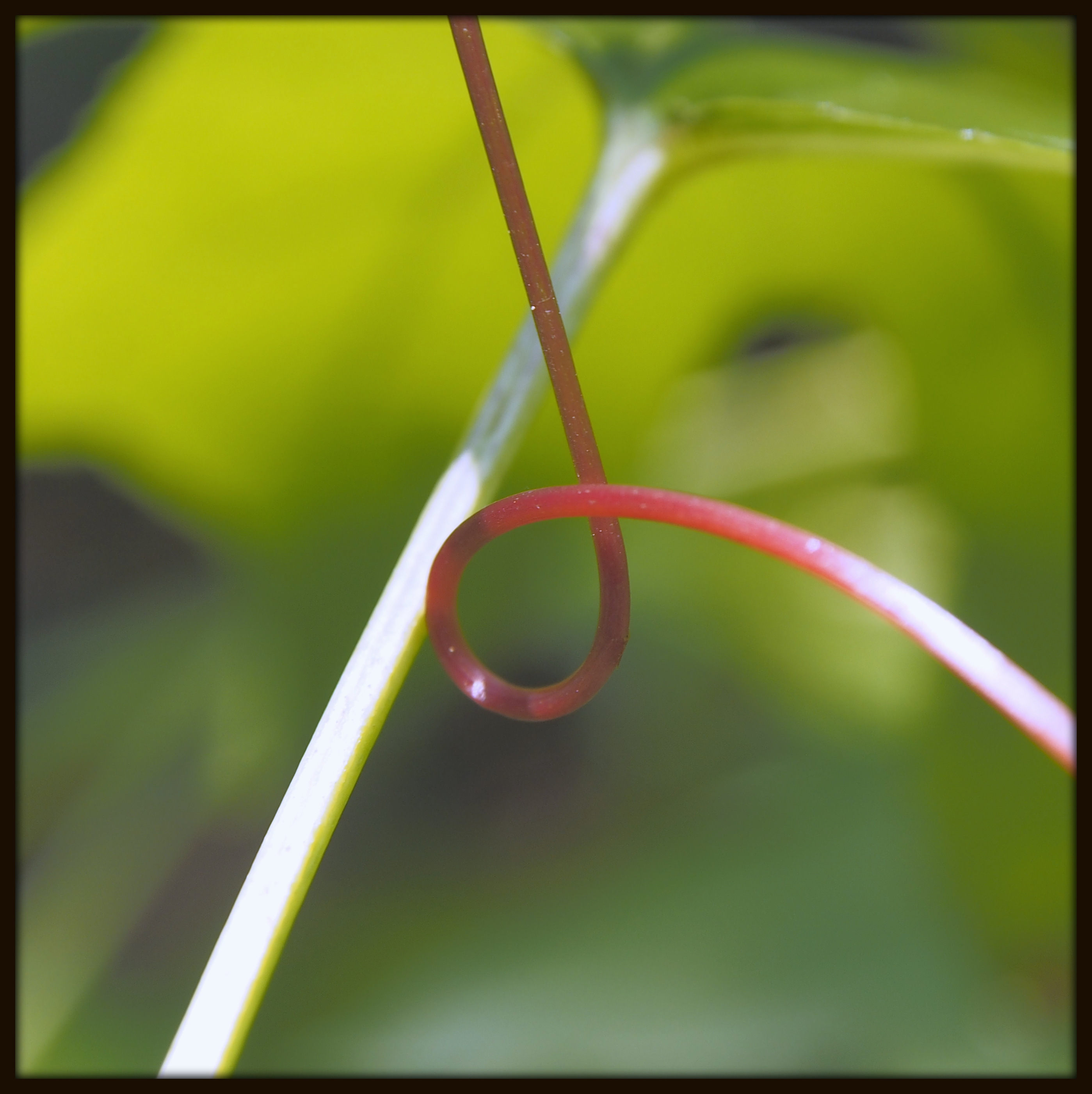
My favorite image from this afternoon’s Piney Woods Church Road walk is this dried and curled bit of water oak leaf.

For a drippy, languid gray Friday afternoon, a meditation on green: A water droplet clings to the stem of a sweetgum leaf.

Today on my morning walk I kept finding myself drawn to tendrils of muscadine grapevines, which are growing in profusion right now along Piney Woods Church Road.
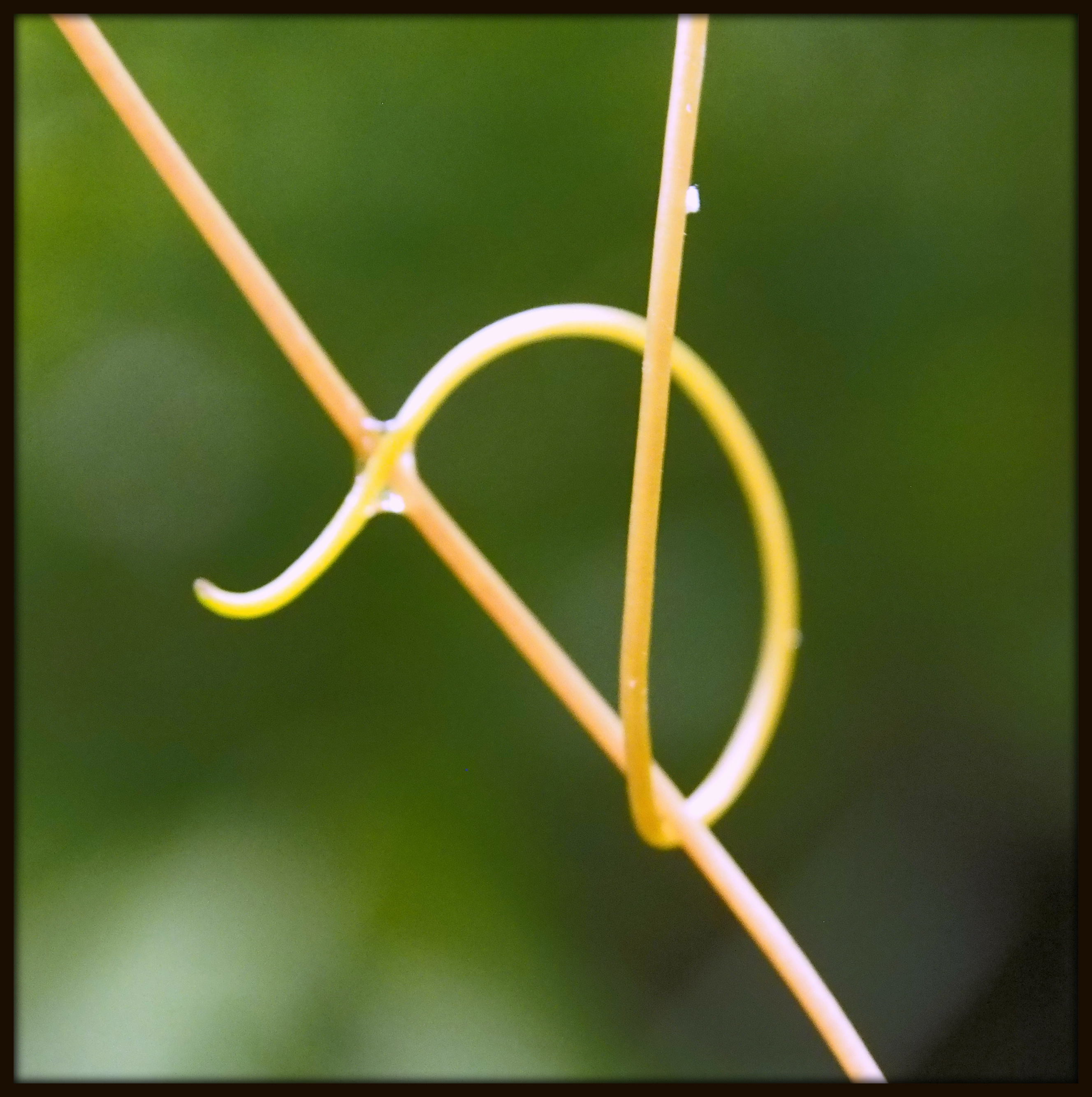
There are two more flowers in bloom in my neighborhood, though I haven’t found examples yet along Piney Woods Church Road. The first is the Slender Ladies’ Tresses Orchid (Spiranthes lacera), which has been appearing in my front lawn for the past several years. I do the best I can to mow around them when I see them; typically, there are half a dozen of them scattered across my yard. Then, just across the road from my house, beside Rico Road and in the shade of a forest edge, I saw a single blossom of what I am nearly certain is the Carolina Wild Petunia (Ruellia carolinensis). This lovely flower looked like it had escaped from somebody’s garden. However, if my ID is correct, it is actually a wildflower native to much of the Southeast.
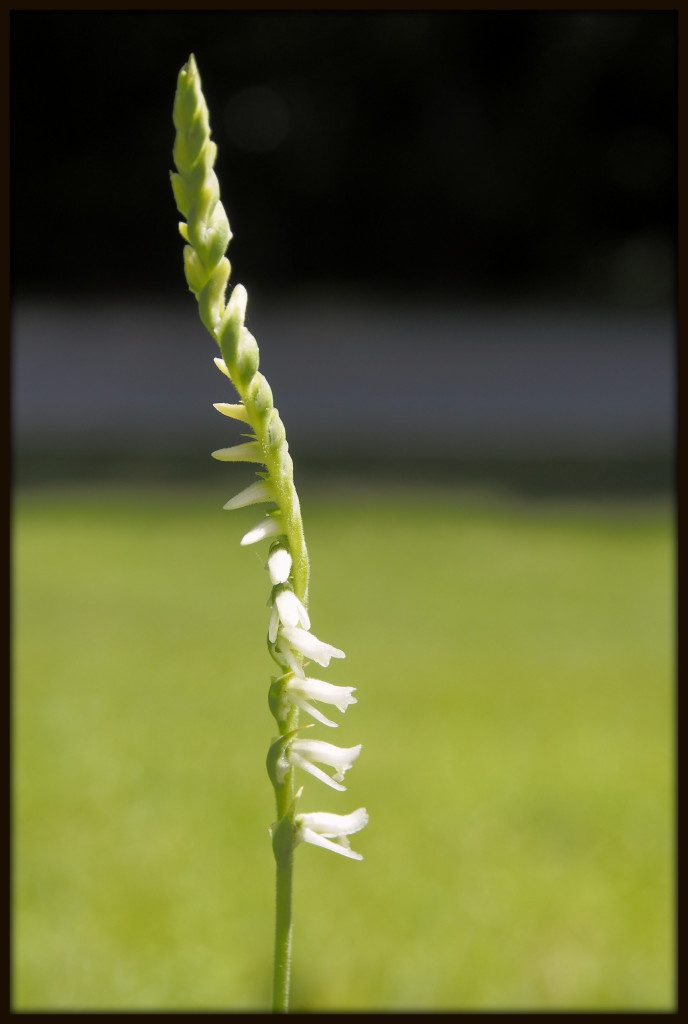
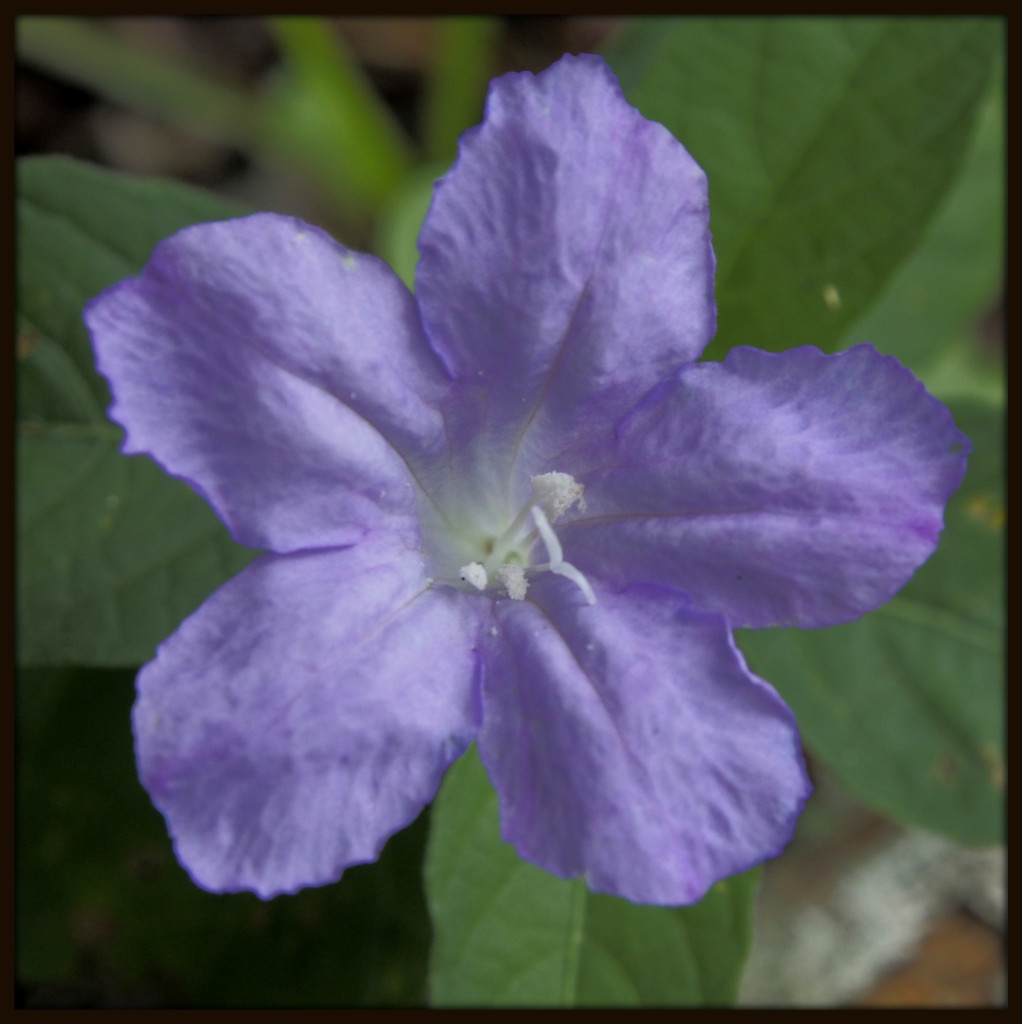
In addition to the all of the still-blooming daisy fleabanes (on their way out, at last), two other flowers are currently in bloom along Piney Woods Church Road: a lone daylily, and a small number of Carolina horsenettles.
I photographed this daylily plant just two days ago; however, today’s image is of a different bloom. Each one lasts for only a single day, as the name suggests. Since there was only one bloom, I again resisted the urge to pluck it. As I noted in my earlier post, the petals taste like sweet lettuce, adding a splash of orange to a salad.
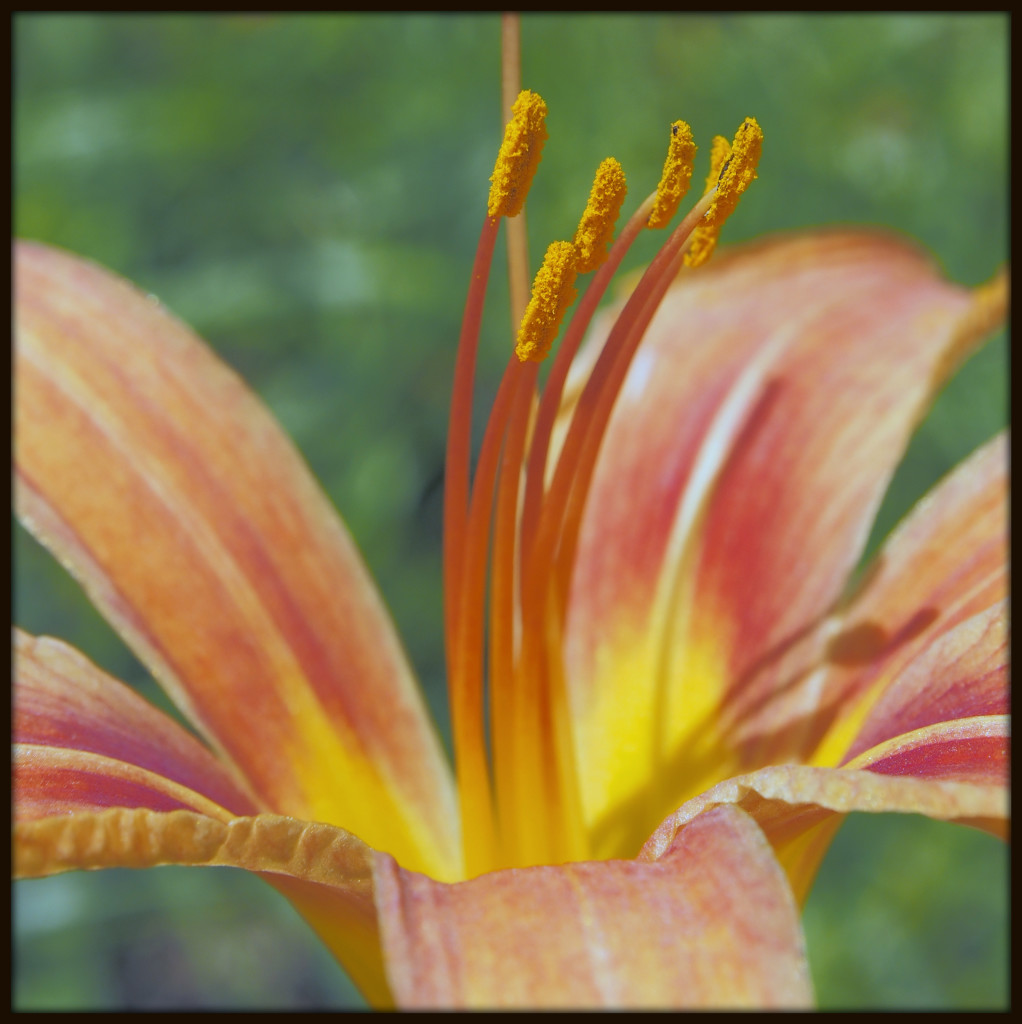
On the other end of the spectrum is the Carolina horsenettle (Solanum carolinense), also known as sand brier, radical weed, bull-nettle, tread-softly, apple of Sodom, and the devil’s tomato. As several of these names suggest, the Carolina horsenettle is not edible — in fact, it can be quite toxic, due to the presence of solanine. Ingesting any part of this thorny plant can make one quite ill; eating the tomato-like fruits can be fatal. Ironically, unlike the daylily, the Carolina horsenettle is native to the Southeastern United States, though it has now spread across the country.
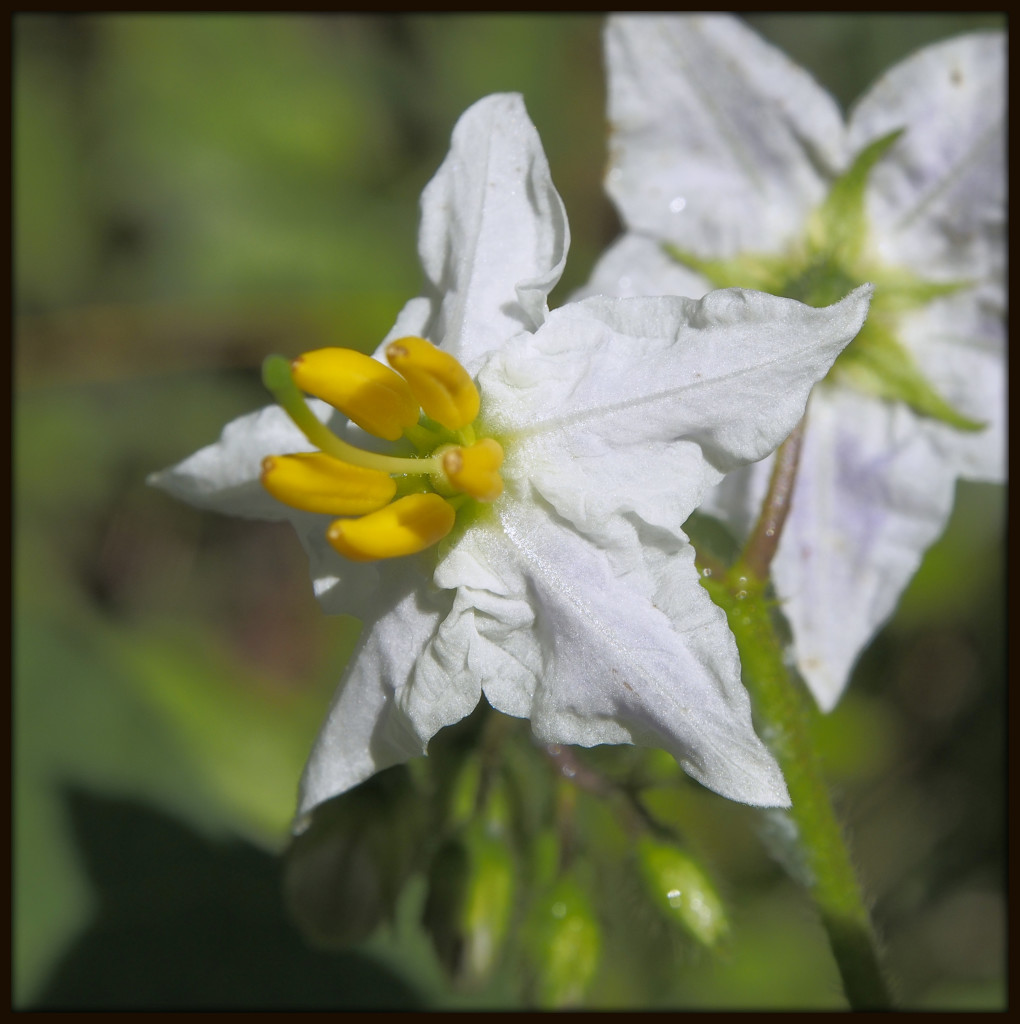
 The southern magnolia (Magnolia grandiflora) is of an ancient lineage. Emblem of the old South, its roots reach back much further into the evolutionary past. In his marvelous book, A Natural History of Trees of Eastern and Central North America, Donald Culross Peattie wrote of how magnolias “have come down to us, by the winding ways of evolution, from an unimaginable antiquity.” Paleontologists have found fossils of past species of Magnoliaceae, the family of plants to which magnolias belong, stretching back 95 million years. Those earliest ancestors of the magnolias of today flourished during the mid-Cretaceous Era in the days of the dinosaurs, before Tyrannosaurus rex even appeared on the scene. A species of magnolia tree similar to magnolias of today has been identified from fossils dating back to twenty million years ago. Once spanning the globe, Ice Age glaciation extirpated magnolias from many places, leaving behind a disjunct distribution of species. Of the 245 species of trees and shrubs in Magnoliaceae, two-thirds are found in Asia, and forty percent of these are in southern China alone. The other third is found in eastern North America, the West Indies, Central America, and South America. Over half of these 245 species are now approaching extinction in the wild, due to rapid destruction of their forest habitat.
The southern magnolia (Magnolia grandiflora) is of an ancient lineage. Emblem of the old South, its roots reach back much further into the evolutionary past. In his marvelous book, A Natural History of Trees of Eastern and Central North America, Donald Culross Peattie wrote of how magnolias “have come down to us, by the winding ways of evolution, from an unimaginable antiquity.” Paleontologists have found fossils of past species of Magnoliaceae, the family of plants to which magnolias belong, stretching back 95 million years. Those earliest ancestors of the magnolias of today flourished during the mid-Cretaceous Era in the days of the dinosaurs, before Tyrannosaurus rex even appeared on the scene. A species of magnolia tree similar to magnolias of today has been identified from fossils dating back to twenty million years ago. Once spanning the globe, Ice Age glaciation extirpated magnolias from many places, leaving behind a disjunct distribution of species. Of the 245 species of trees and shrubs in Magnoliaceae, two-thirds are found in Asia, and forty percent of these are in southern China alone. The other third is found in eastern North America, the West Indies, Central America, and South America. Over half of these 245 species are now approaching extinction in the wild, due to rapid destruction of their forest habitat.
Denizen of the southern Coastal Plain and established guest across much of the southern Piedmont, the southern magnolia fortunately has a fairly secure future. It has become emblematic of the old South, and is commonly seen growing on the properties of antebellum plantation homes, as well as many a suburban front yard. This author visited an antebellum mansion, now a bed and breakfast, in eastern Georgia a few years ago. In the front yard were a pair of mighty magnolias with immense trunks. The same trees could be seen as slender saplings in a photograph of the house taken just prior to the Civil War.
To view a blossoming magnolia and breathe in its strong lemony fragrance is at once to connect with both the heritage of the South and another heritage that reaches back to the very evolutionary origins of the angiosperms, or flowering plants. While not the most primitive of flowers (botanists grant that status to water lilies), magnolias are not far behind. They evolved before bees did, so they rely instead upon beetles for pollination. This may seem unusual, but in fact, beetles actually pollinate an amazing eighty-eight percent of all the flowering plants around the world. As pollinators, beetles lack the delicate elegance of a hummingbird or butterfly. They tend to be quite messy, bumbling about and damaging flowers in the process, and sometimes defecating and leaving waste behind. For this reason, magnolias have very hardy flowers, with thick sepals and petals and tough carpels. They do not secrete nectar. Instead, they produce protein-rich pollen upon which the beetles feed.
A number of other features of the magnolia blossom indicate its ancient lineage. As Peatiie wrote of its close relative the mountain magnolia (Magnolia fraseri), “Its antiquity is visible in its flower structure, which is primitive, and so is that of the fruit and of the wood.” Although most flowering plants have blooms in which the petals and sepals (modified leaves that protect the flower bud) look quite different (often the sepals are green and the petals brightly colored), the petals and sepals of magnolia flowers are virtually identical. The are arranged in a simple whirl pattern. The flower also produces no complex structures for limiting flower access to certain species of pollinators or for controlling pollinator behavior. Magnolia flowers are also unusual for having many stamens (male flower parts) and pistils (female flower parts). The receptacle to which both are attached bears the stamens at its base and the pistils at the top.
After pollination, the flower loses its petals and sepals, and the aggregate fruit begins to develop. The follicles (former pistils) form a cone-like structure. In time, these follicles split, releasing dry, seeds with bright red fleshy coverings called arils. High in fat, these seeds provide excellent forage for many species of small mammals and birds in the autumn. The birds are particularly familiar visitors, since they are themselves the descendants of dinosaurs. Their own ancestors may well have walked among (or trampled down, or eaten) some of the earliest members of the magnolia family, tens of millions of years ago.
This article was originally published on June1, 2010.